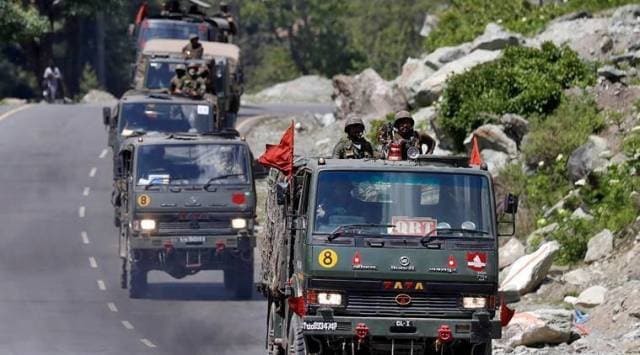Indian, Chinese commanders hold 15th round of talks on eastern Ladakh areas
Both sides have a platoon-sized strength of soldiers in Hot Springs, but the Chinese troops are on the Indian side of the Line of Actual Control
 The Indian delegation was led by the commander of XIV Corps, which is responsible for the Line of Actual Control (LAC) with China in eastern Ladakh, Lt Gen Anindya Sengupta (Reuters Photo/File)
The Indian delegation was led by the commander of XIV Corps, which is responsible for the Line of Actual Control (LAC) with China in eastern Ladakh, Lt Gen Anindya Sengupta (Reuters Photo/File)Indian and Chinese Corps Commanders met for the 15th time on Friday to try resolve the balance friction areas in eastern Ladakh. The meeting, which began on the Indian side of the Chushul-Moldo border personnel meeting point, started at 10am and continued till late evening.
The Indian delegation was led by commander of XIV Corps, which is responsible for guarding the Line of Actual Control (LAC) with China in eastern Ladakh, Lt Gen Anindya Sengupta, who had taken the reins of the unit just before the 14th round of discussions in January.
🗞️ Subscribe Now: Get Express Premium to access the best Election reporting and analysis 🗞️
For China, the delegation was headed by Maj Gen Yang Lin, commander of the South Xinjiang Military District, who, too, had led the discussions in the 14th round in January for the first time.
Indian side was hopeful that the discussions on Friday could lead to disengagement from Patrolling Point (PP) 15 in the Hot Springs area, where both sides have a platoon-sized strength of soldiers, but the Chinese troops are on the Indian side of the LAC.
Sources in the Indian security establishment said they were also hopeful of reaching an understanding to reduce the total number of additional troops and weapons that are positioned in the region by both sides.
In Depsang Plains, which is close to India’s strategic Daulat Beg Oldie base in the north, Chinese troops are blocking Indian soldiers from accessing five traditional patrolling limits—PP10, PP11, PP11A, PP12 and PP13—at an area known as the Bottleneck, which is 18km inside the LAC.
In Demchok some Chinese have pitched tents on the Indian side of the LAC, and have refused to vacate it.
Ahead of the meeting, a defence establishment source had stated both sides will focus “to achieve resolution of balance friction areas” during the discussions and the recent “statements by both sides to find a mutually acceptable solution have been encouraging and positive in nature.”
Since the standoff began almost two years ago, in May 2020, the two sides have pulled back their troops from PP14 in Galwan Valley, north and south banks of Pangong Tso, including the Kailash Range heights in the Chushul sub-sector, and PP17A in Gogra Post area.
In all these areas, a temporary no-patrolling zone has been created, to avoid any inadvertent face-offs till the entire standoff is resolved.
However, both sides have more than 50,000 troops each in the region, along with additional air defence, artillery, tanks and other weapon systems.







